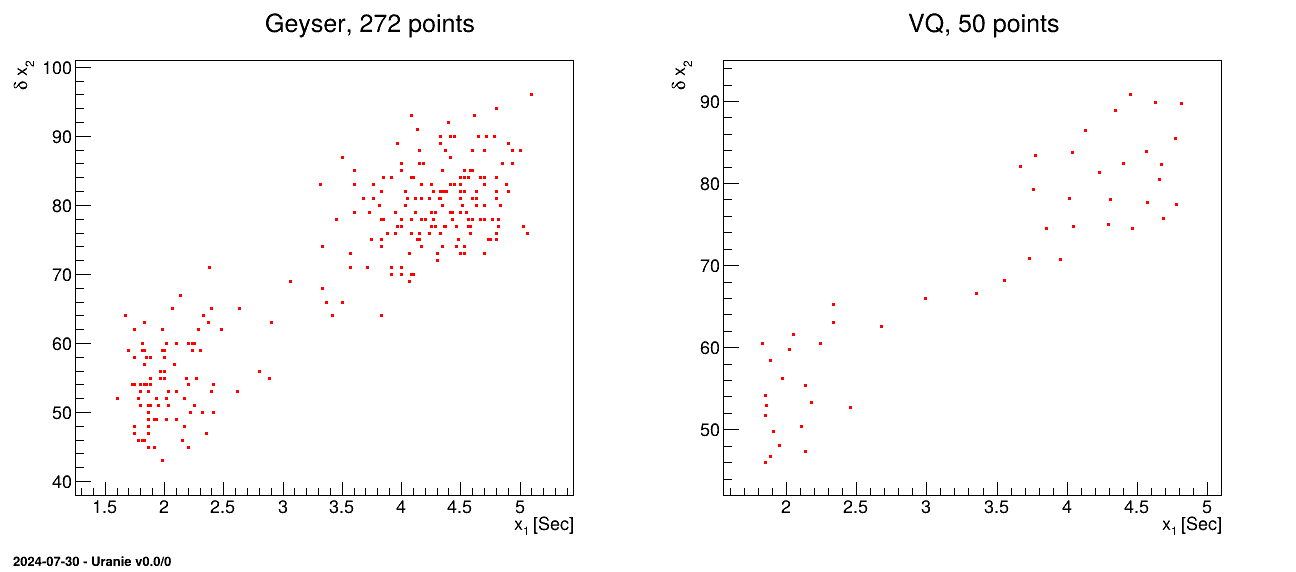Documentation
/ User's manual in C++
: 
This method is called when instead of having a list of input parameters (in terms of stochastic distribution) that one
would like to transform into a design-of-experiments, the user has a dataset, made out of a very large number of points. In this case,
it is possible, using the TNeuralGas class, to create sub-sample of points that would be
representative of the complete provided-set, based on a NeuralGas algorithm. This might be useful in order to test the
output of long and complicated codes or computations without leaving aside a possible area of the input parameter
values.
Figure III.16 shows the effect of the reduction of the sample in the simple case of a
two-dimensional plane, when considering the "geyser.dat" file and its sub-sample of 50 points.
Figure III.16. Example of a dataset reduction (the geyser one) using the NeuralGas algorithm, to go from 272 points (left) to 50 one (right)
 |
Here is an example of how to use the neuralgas algorithm to reduce a database.
TCanvas *c = new TCanvas("Can","Can",10,32,1300,600);  c->Divide(2,1);
TDataServer *tdsGeyser = new TDataServer("tdsgeyser", "Neural Gas for Geyser");
tdsGeyser->fileDataRead("geyser.dat");
TNeuralGas * tvq = new TNeuralGas(tdsGeyser,"", 50);
c->Divide(2,1);
TDataServer *tdsGeyser = new TDataServer("tdsgeyser", "Neural Gas for Geyser");
tdsGeyser->fileDataRead("geyser.dat");
TNeuralGas * tvq = new TNeuralGas(tdsGeyser,"", 50);  tvq->setDrawProgressBar(kFALSE);
TDataServer *tdsng = tvq->getSubSample("loop=20");
tvq->setDrawProgressBar(kFALSE);
TDataServer *tdsng = tvq->getSubSample("loop=20");  c->cd(1);
tdsGeyser->draw("x2:x1");
((TH2F*)gPad->GetPrimitive("__tdshisto__0"))->SetTitle("Geyser, 272 points");
c->cd(1);
tdsGeyser->draw("x2:x1");
((TH2F*)gPad->GetPrimitive("__tdshisto__0"))->SetTitle("Geyser, 272 points");  c->cd(2);
tdsng->draw("x2:x1");
((TH2F*)gPad->GetPrimitive("__tdshisto__0"))->SetTitle("VQ, 50 points");
c->cd(2);
tdsng->draw("x2:x1");
((TH2F*)gPad->GetPrimitive("__tdshisto__0"))->SetTitle("VQ, 50 points");
Construction of the plot
Creation of | |
Construction of the neuralgas object from the provided database | |
Get the sub-sample as a new dataserver, after looping 20 the algorithm | |
Access the latest histogram drawn on current pad, to change its title |






